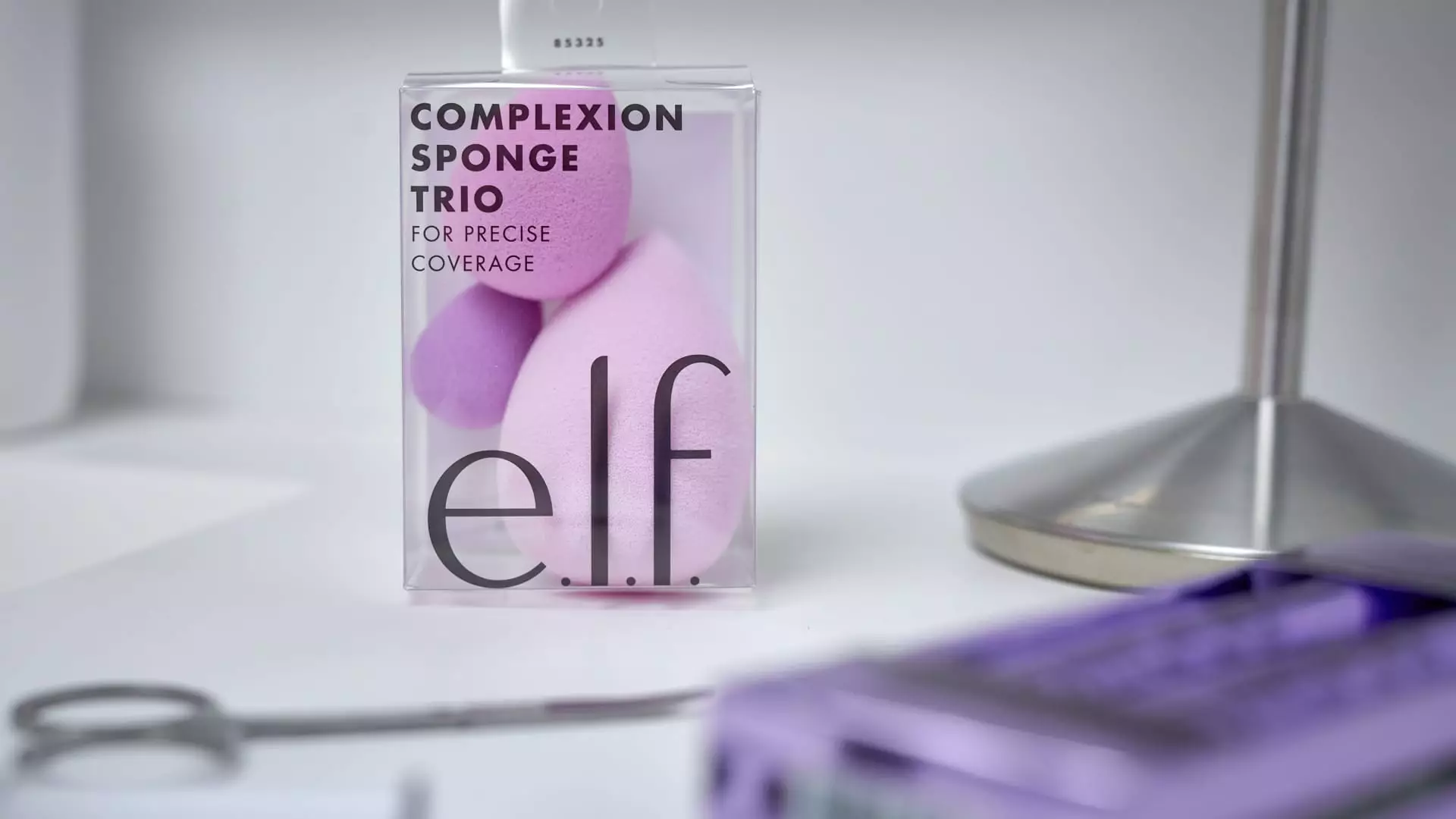E.l.f. Beauty Faces Challenges Amid a Rapidly Changing Market

E.l.f. Beauty, a prominent name in the cosmetics industry known for its budget-friendly prices and innovative marketing strategies, has recently encountered a significant setback. The company revealed a staggering 36% drop in profits and acknowledged “softer than expected” sales trends for January, a month that typically boasts heightened sales due to post-holiday shopping. This downturn is particularly noteworthy as it represents a rare stumble for a brand that has consistently driven growth in a competitive beauty market. After reporting holiday sales that exceeded expectations, E.l.f. missed profit estimates for the fiscal third quarter, causing its stocks to plummet by more than 20% in after-hours trading.
In the details provided by the company, E.l.f. posted adjusted earnings of 74 cents per share, slightly falling short of analyst expectations of 75 cents. Revenue was reported at $355 million, thus beating Wall Street’s forecasts of $330 million. However, despite the revenue surpassing expectations, the broader implications of profit decline led to a grim outlook.
E.l.f.’s net income for the recently concluded quarter stands at $17.3 million, or 30 cents per share, compared to $26.9 million or 46 cents a share from the same period a year earlier. This indicates not only a decrease in profit but raises questions regarding operational efficiency and product appeal. The company’s guidance for the remaining fiscal year also failed to meet industry standards. Management now anticipates full-year sales between $1.3 billion and $1.31 billion against the background of expectations that reached as high as $1.34 billion. Similarly, the projected earnings per share have been lowered to a range of $3.27 to $3.32, again coming in under analysts’ estimates of $3.54.
The implications of these cuts are vast, as they suggest a potential cooling off in what had been a rapid growth trajectory. The announcement shone a light on not just company-specific hardships but also on the broader market trends that appear to be affecting the entire beauty sector.
CEO Tarang Amin remained optimistic during a recent interview, attributing the downturn to a general slowdown in the beauty industry rather than E.l.f.’s individual missteps. He highlighted that the mass cosmetics sector has reportedly suffered a 5% decline in January sales, potentially linked to lingering effects from holiday promotions and a decrease in online “social commentary” surrounding beauty topics. Amin noted that events—in particular, the geopolitical and cultural climate—have influenced consumer behavior and engagement on platforms like TikTok, which traditionally play a central role in marketing beauty products.
The company’s past successes have often been buoyed by its ability to create viral trends and engage younger audiences. However, this social media uncertainty raises red flags regarding future marketing strategies and product launches. While E.l.f. still considers itself to be outpacing the market, the current slow down must prompt a reevaluation of its approach to new product introductions and promotional tactics.
Moreover, E.l.f. faces external pressures pertaining to its supply chain, which is heavily reliant on China. The recent imposition of new tariffs could further complicate its operational strategies, as 80% of E.l.f.’s supply chain is sourced from that region. While Amin has not yet determined whether these tariff impacts will necessitate price increases for their products, they certainly represent another hurdle for the company as it grapples to maintain its competitive edge.
Despite these challenges, E.l.f. remains committed to a prudent financial outlook. Amin emphasized using the company’s profits to enhance infrastructure, inventory management, and explore international market expansion. This long-term strategic vision aims to solidify E.l.f.’s standing in a rapidly evolving market and ensure sustained profitability despite the current turbulence.
E.l.f. Beauty is at a crucial juncture filled with challenges but also opportunities. The company’s recent performance highlights the volatility within the beauty industry and signals a need for adaptability. E.l.f. must navigate through its current difficulties by innovating its marketing strategies, reassessing product launches, and effectively managing its supply chain. By focusing on long-term growth and structural improvements, E.l.f. can potentially reclaim its status as a market leader, but it will require a careful balance of responding to immediate market demands while staying true to its core values and brand identity.





